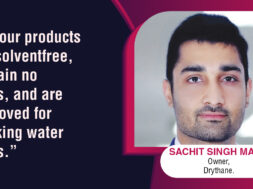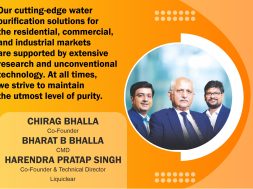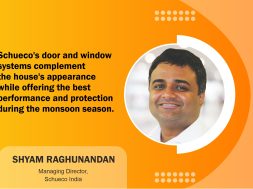Revolutionary waterproofing system: cost-effective and no need for additional protective layers

Sachit Singh Mann, Owner of Drythane, speaks about eco-friendly waterproofing solutions and monsoon treatments.
What are the key factors when selecting a waterproofing solution for monsoon-prone areas?
Our developed coating is entirely resistant to water penetration. We strongly advocate for protective coatings to have continuous water-repellent properties instead of only a few hours. Typically, most coatings on the market have significant water absorption rates, reaching their saturation point, rendering them ineffective in heavy monsoon conditions.
What are the advantages and disadvantages of various waterproofing techniques for the monsoon season, such as chemical coatings, membranes, and sealants?
Using sheet membranes is considered outdated and unreliable, as their longevity is limited. When a single membrane deteriorates, it compromises the entire system. Although sealants can serve as a complementary addition to 2K PU or hybrid polyurea coatings, they cannot function as an independent solution.
Are there any eco-friendly waterproofing solutions that are suitable for the monsoon season?
Our products are free from solvents and volatile organic compounds (VOCs) and have been authorised for usage in drinking water tanks, which highlights their purity and eco-friendliness. Our aliphatic topcoat can decrease the surface temperature of concrete by 10 to 15 degrees Celsius, making it essential in metropolitan areas where overheating is a prevalent concern.
How long does a typical waterproofing treatment last during the monsoon?
Conventional waterproofing systems usually last for only a few monsoon seasons. In contrast, the waterproofing systems we produce have a service life spanning multiple decades, which is a testament to their strength and durability as liquid membranes. Additionally, our coatings require minimal maintenance.
What are the common signs of waterproofing failure during the monsoon, and how can they be addressed?
Over time, cracks can develop in the concrete substrate due to shrinkage, and using inferior construction materials on-site can exacerbate this issue. A high-quality waterproofing, the coating should be able to bridge these cracks without any issues and maintain its effectiveness for several decades. However, if cracks do appear in the protective coating, this indicates a failure of the waterproofing system to deter water ingress. A good quality waterproofing coating should not have any problems that must be addressed.
What are the costs of waterproofing solutions for the monsoon, including materials, labour, and maintenance expenses?
Our systems are designed to be a complete solution, reducing the need for additional protective layers. A typical 4-coat system is cost-effective, with a price of around ₹ 90 per sq. ft. This system eliminates the need for tiling, which can cost an additional 60-70 ₹ per sq. ft. for basic budget tiles. Additionally, our system eliminates the need for traditional insulation systems like brick bat coba, further reducing costs. Maintaining our coating is also easy, as it only requires light washing with soap and water, similar to a regular tiled roof. This helps to keep future expenses low as well.
for more info visit : https://drythane.com/
47
Cookie Consent
We use cookies to personalize your experience. By continuing to visit this website you agree to our Terms & Conditions, Privacy Policy and Cookie Policy.










